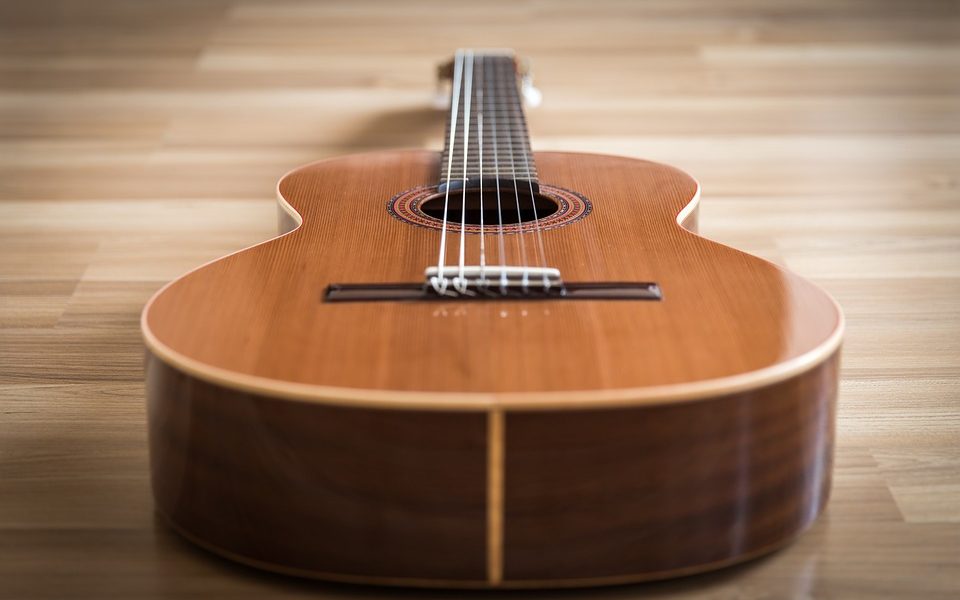Mastering Intervals: A Beginner’s Guide to Guitar Scales and Chords
Mastering Intervals: A Beginner’s Guide to Guitar Scales and Chords
Learning to play the guitar can be both exciting and challenging for beginners. One of the key concepts that every guitarist must understand is intervals. Intervals are the distance between two notes, and they form the building blocks of scales and chords. In this beginner’s guide, we will explore how intervals work, how they are used in guitar playing, and how you can master them to improve your playing skills.
Understanding Intervals
Intervals are classified according to their distance in terms of half steps or whole steps. The smallest interval is a half step, which is equivalent to moving from one fret to the next on the guitar. A whole step, on the other hand, is equivalent to moving two frets on the guitar.
Intervals can also be classified as major, minor, perfect, augmented, or diminished. Major intervals are generally considered to be more consonant and stable, while minor intervals are considered to be more dissonant and unstable. Perfect intervals have a neutral sound, while augmented and diminished intervals have a more tense and unresolved quality.
Using Intervals in Scales
Scales are sequences of intervals that create a specific sound or mood in music. The most common scale in Western music is the major scale, which consists of a specific pattern of whole and half steps. For example, the C major scale is made up of the following intervals: whole, whole, half, whole, whole, whole, half.
To master scales on the guitar, you must first learn the interval patterns for each scale. This will allow you to play the scale in different positions on the fretboard and improvise with confidence. Practice playing scales slowly and accurately, paying close attention to the intervals and the sound they create.
Creating Chords with Intervals
Chords are created by stacking intervals on top of each other to produce a harmonious sound. The most basic type of chord is the triad, which consists of three notes: the root, the third, and the fifth. The intervals between these notes determine whether the chord is major, minor, augmented, or diminished.
For example, a major chord is made up of a major third interval between the root and the third, and a perfect fifth interval between the root and the fifth. A minor chord, on the other hand, is made up of a minor third interval between the root and the third, and a perfect fifth interval between the root and the fifth.
To master chords on the guitar, you must first learn the interval patterns for each type of chord. Practice forming chords in different positions on the fretboard, paying close attention to the intervals and the sound they create. Experiment with different voicings and inversions to create unique sounds and textures.
Improvising with Intervals
Once you have mastered scales and chords, you can start to explore the creative possibilities of intervals in your playing. Improvisation is a key skill for guitarists, as it allows you to express yourself freely and develop your own musical style.
When improvising, focus on the intervals and how they interact with each other to create tension, release, and resolution. Experiment with playing around the chords of a song, using different intervals to add color and emotion to your playing. Trust your ears and instincts, and let your creativity guide you as you explore the musical landscape.
Mastering Intervals: A Practice Routine
To master intervals on the guitar, it is essential to practice regularly and systematically. Here is a simple practice routine that you can follow to improve your understanding and mastery of intervals:
1. Start by learning the interval patterns for major and minor scales in all 12 keys. Practice playing the scales slowly and accurately, focusing on the intervals and the sound they create.
2. Next, practice forming triads in different positions on the fretboard. Pay close attention to the intervals between the root, third, and fifth, and experiment with different voicings and inversions.
3. Once you are comfortable with scales and chords, start improvising with intervals over backing tracks or songs. Experiment with different intervals and explore the creative possibilities of your playing.
4. Finally, listen to recordings of your favorite guitarists and analyze how they use intervals in their playing. Try to incorporate some of their techniques and ideas into your own playing to develop your unique style.
Conclusion
Mastering intervals is an essential skill for every guitarist, as it forms the foundation of scales, chords, and improvisation. By understanding how intervals work, how they are used in guitar playing, and how you can practice and master them, you can take your playing skills to the next level and become a more confident and expressive guitarist. So pick up your guitar, start practicing, and let the magic of intervals guide you on your musical journey.






